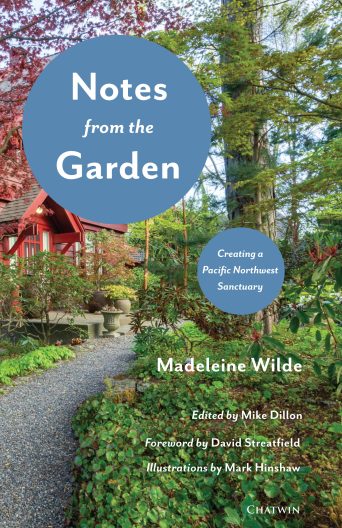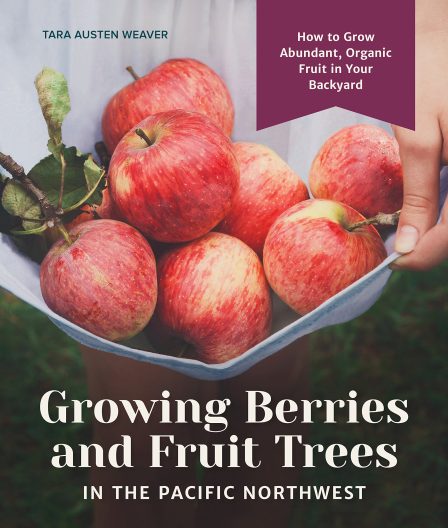Do you have any materials written by Elisabeth Miller? I work at the Carl S. English, Jr. Botanical Garden at the Ballard Locks, and I’m interested in comparing her approach to gardening with Carl English’s. Carl did not write much about his work, and I’m curious if I can learn more about him from other people’s work.
I want to learn more about Carl’s guiding ideas about horticulture so in the future we can continue to cultivate a garden that he could still recognize. I’m trying to pin down some concrete guidelines on what and how we add to the botanical collection here in the garden. The more information I have about and from Carl, the better I hope to answer this question.
It’s also interesting to juxtapose Betty and Carl’s careers and outputs. It helps me place his actions in the context of what was going on horticulturally during their working careers.
On the face of it, the two plant-lovers had very different approaches to gardening and life.
Betty (1914-1994) was an activist and advocate for public gardens and green space in the city, but her primary garden was and remains inside a gated community. As far as I know she never ran a business of any kind, although she worked with local nonprofit groups and believed in horticultural education. She was active in the Garden Club of America and the American Horticultural Society. One of her proud accomplishments was raising $40,000 for a comprehensive approach to planting the Lake Washington Ship Canal, a project that brought her into collaboration with the Army Corps of Engineers.
We have in our archives here several things Betty Miller wrote for publication:
- V. 53 issue 2, 1974, American Horticulturist article “Why Green Turns Brown.”
- Winter 1978 Arboretum Bulletin article “Challenge to Maintain the Green Scene.”
- 10/1979, American Forests magazine issue with article “Seattle’s Freeway Park” by Betty Miller.
- Summer 1982, “The Roots of the N.O.H.S,” by Betty Miller, reprinted from Horticulture Northwest.
- 1982 Puget Soundings article “There is Always a Garden.”
- Her chapter from Rosemary Verey’s 1984 book, The American Woman’s Garden, where she writes about her garden.
There is also an interesting list of biographical data on Betty Miller that I would guess she wrote herself in the late 80s or early 90s.
This 1996 article by David Laskin in the Seattle Weekly gets into more detail about Betty’s personality:
So does Ted Marston’s remembrance of her from the Autumn 1994 Garden Notes (a Northwest Horticultural Society publication). He spoke with Mareen Kruckeberg, Dick Brown, Steve Lorton, Michael Lynn and others about their memories of Betty.
Carl (1904-1976) moonlighted with his nursery business, and of course the gardens named for him at the Locks are a beloved public institution. He participated in plant exchanges with arboreta around the world and joined plant societies worldwide, including the American Horticultural Society, the Scottish Rock Garden Club, the Alpine Garden Society of England, and others. Native plants of this region were also of interest to him and his wife Edith; they botanized and contributed specimens to herbaria. On a personal level, he was said to be outdoorsy, friendly, and a valued member of groups. He gave lectures and led field trips to the mountains.
In our archives, you can read this article by Carl English:
- Summer 1972, “The Garden at the Hiram M. Chittenden Locks in Seattle,” American Horticulturist, 3 pp.
This promotional text he likely wrote as well:
- 4/1962, Locks brochure with cover photo of welcome sign and building (see “Seven Acres of Gardens” on the back, which Carl may have written himself.)
- 1969 “Green Palms” brochure.
Here is a piece about him written before he died in 1976:
- 9/1957, “Plantsmen in Profile, Carl S. English Jr.” by William J. Dress, rpt. from “Baileya,” 6 pp. (reprinted in Horticulture Northwest, vol. 11, no. 4, 1984 with a different picture of Carl)
We also have obituaries and remembrances of him.
HistoryLink has a couple of articles that may interest you. This is their perspective on Carl S. English, Jr. They also host this article, where Art and Mareen Kruckeberg count both Betty and Carl among their friends.
 Madeleine Wilde was the author of a gardening column in Seattle’s “Queen Anne & Magnolia News” that ran for over 20 years. Near the end of her life in 2018, she asked her publisher, Mike Dillon, to compile and edit those columns into a book. “Notes from the Garden” has recently been published, a treasure to be cherished by all local gardeners.
Madeleine Wilde was the author of a gardening column in Seattle’s “Queen Anne & Magnolia News” that ran for over 20 years. Near the end of her life in 2018, she asked her publisher, Mike Dillon, to compile and edit those columns into a book. “Notes from the Garden” has recently been published, a treasure to be cherished by all local gardeners. Marko Colby and Hanako Myers are organic gardeners in Quilcene, Washington, growing both vegetables to sell in markets and vegetable starts for home gardeners. From their experiences answering the questions of their seedling buyers, they have put together a small (83 pages) but very useful book titled “Vegetable by Vegetable: A Guide for Gardening Near the Salish Sea.”
Marko Colby and Hanako Myers are organic gardeners in Quilcene, Washington, growing both vegetables to sell in markets and vegetable starts for home gardeners. From their experiences answering the questions of their seedling buyers, they have put together a small (83 pages) but very useful book titled “Vegetable by Vegetable: A Guide for Gardening Near the Salish Sea.” Pat Roome has been a gardener for almost all of her 87 years, has lived and gardened at the same Bellevue home for 56 years, and has been a Master Gardener for 45 years. That’s a lot of experience, and she decided it was time to share her accumulated knowledge in a self-published book, “Legacy of a Passionate Gardener.” We are all the beneficiaries.
Pat Roome has been a gardener for almost all of her 87 years, has lived and gardened at the same Bellevue home for 56 years, and has been a Master Gardener for 45 years. That’s a lot of experience, and she decided it was time to share her accumulated knowledge in a self-published book, “Legacy of a Passionate Gardener.” We are all the beneficiaries. Tara Austen Weaver became smitten on growing fruit in Seattle after planting raspberries during an extended summer visit. Later, she moved here permanently to a house with nine mature fruit trees and proceeded to add 14 more plus many berry plants. Her new book, “Growing Berries and Fruit Trees in the Pacific Northwest,” is based on that experience and is an excellent choice for the beginning fruit grower in Washington, Oregon, or British Columbia, especially west of the Cascades.
Tara Austen Weaver became smitten on growing fruit in Seattle after planting raspberries during an extended summer visit. Later, she moved here permanently to a house with nine mature fruit trees and proceeded to add 14 more plus many berry plants. Her new book, “Growing Berries and Fruit Trees in the Pacific Northwest,” is based on that experience and is an excellent choice for the beginning fruit grower in Washington, Oregon, or British Columbia, especially west of the Cascades.![[Oh, La La!] cover](https://depts.washington.edu/hortlib/graphix/Ohlala!.jpg)